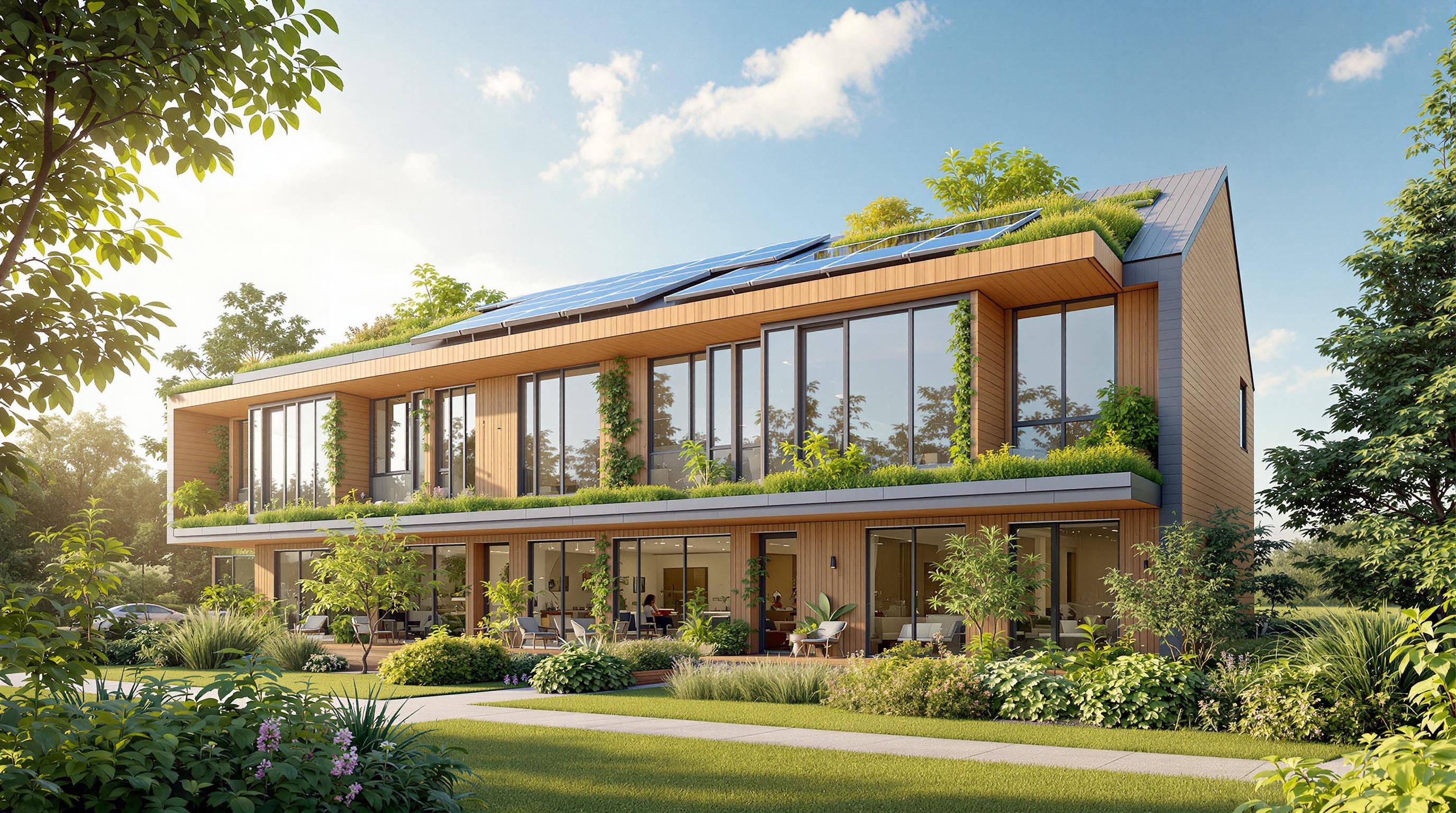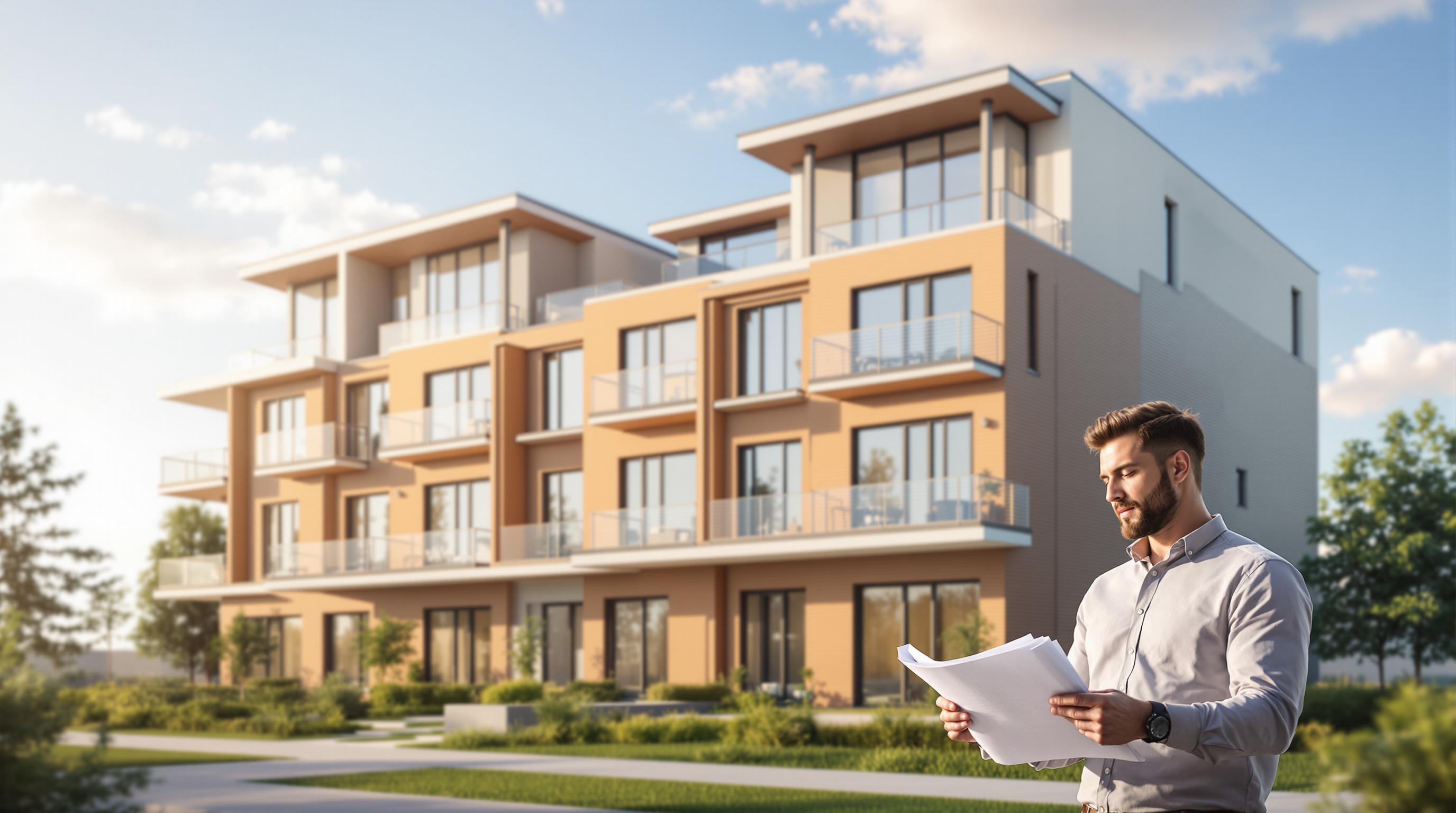Millennials and retirees are reshaping Halifax’s housing market with distinct needs and preferences. Millennials prioritize affordability, urban access, and smart home features, while retirees focus on single-level living, accessibility, and proximity to healthcare. Developers face the challenge of balancing these demands as home prices have risen by 120% since 2008.
Key Insights:
-
Millennials:
- Make up 38% of homebuyers and 54% of home loan applications.
- Seek affordable, urban homes with smart features.
- Face financial challenges: 17 years to save for a down payment.
-
Retirees:
- Account for 45% of home sellers.
- Prefer aging in place, accessible designs, and community connections.
- Require homes near healthcare and social spaces.
Quick Comparison:
| Feature | Millennials | Retirees |
|---|---|---|
| Price | Budget under $400,000 | Downsizing, equity-driven |
| Location | Urban/suburban, job access | Near family, healthcare |
| Design | Smaller, tech-enabled spaces | Single-level, accessible layouts |
| Priorities | Smart features, security | Safety, social activities |
Developers are responding with mixed-age housing projects, blending affordability, flexibility, and universal design to meet the needs of both groups.
Millennial Housing Needs: Cost and City Access
Budget Limits and Cost Factors
Buying a home in HRM has become a financial challenge for millennials. Between 2015 and 2022, benchmark property prices skyrocketed from $409,000 to $861,000, while wages only increased by 23% during the same period [1].
Monthly expenses add to the strain. According to Sunmark Credit Union, millennials spend around $5,845 each month on essentials like housing, utilities, and other living costs [2].
Saving for a home has also become a much longer process. Back in 1986, young adults could save for a down payment in about five years. Today’s millennials are looking at a 17-year timeline [1]. These financial pressures heavily influence where and how millennials choose to live.
Location and City Services
When it comes to choosing a home, millennials in HRM prioritize location and accessibility. While only 13% live in or near downtown areas, a significant 63% opt for other city neighborhoods or suburban locations [3]. This choice reflects a balance between affordability and lifestyle.
"I live near a large park and I bike almost every day. There's a sense of community here, with people of all ages doing things together. This is important; it roots me to where I am." - Kristen Nicholson, senior manager, UDR [3]
Transportation is another key factor. Over 60% of millennials want to live in areas where they can rely less on cars [3].
Smart Home Features
Technology is a major draw for millennial homebuyers and renters. A striking 86% of millennial renters are open to paying more for smart apartment features, with premiums averaging 20% [4][5].
Here’s what stands out in their preferences:
| Smart Feature | Millennial Response |
|---|---|
| Electronic Access Features | 61% likely to choose a property for this |
| High-Tech Door Locks | 55% willing to pay extra |
| Security Concerns | 63% would move due to inadequate security |
| Parking vs. Technology | 44% would give up parking for smart features |
Security is a top priority. In fact, 63% of millennials say they would leave a property that doesn’t meet their security expectations [4].
Retiree Housing Needs: Safety and Support
Single-Level Living and Easy Care
Retiree housing often requires designs that prioritize accessibility and low upkeep. Right now, only 1% of homes in the U.S. include all the features necessary for aging adults[6]. By 2034, for the first time in U.S. history, the population aged 65 and older will surpass those under 18[6].
Making homes accessible after construction can cost up to 22% more than incorporating these features from the start. This cost difference has encouraged developers to lean toward universal designs - layouts that work for seniors, parents pushing strollers, and even individuals with temporary injuries[7].
These thoughtful designs not only ensure safety but also help create environments where retirees can feel supported and connected.
Social Spaces and Activities
A sense of community is key to a fulfilling retirement. With 77% of adults aged 50 and older preferring to stay in their homes rather than move to senior living communities[6], fostering social connections becomes increasingly important.
"We need to design in ways that are age friendly, family friendly - facilitating ways to interact. Communities need an interactive element. We need places to know one another, have fun with one another - to help people get out of their social isolation bubbles."
– Matthew Kaplan, Ph.D., Professor of Intergenerational Programs and Aging at Pennsylvania State University[6]
To address this, many senior housing developments now include dedicated social spaces and organized activities. These features help residents form bonds and combat isolation.
In addition to social connections, easy access to healthcare is a must for retirees.
Medical Care and Services
Being close to healthcare services is a top priority for retirees. The AARP Public Policy Institute highlights a common mistake people make when choosing a retirement home:
"People shop for the house itself. They don't think of its location in terms of location or ability to age with the owner. Spouses pass on, people cannot maintain a large house, they can't walk up the stairs. People are isolated, they don't drive anymore so they can't get to the store or even family. I've talked to many people whose dream home has become a nightmare."
– Rodney Harrell, Vice President, Family, Home and Community at the AARP Public Policy Institute[6]
To avoid these challenges, retirement housing should include features that support aging in place. Here are some key elements:
| Feature Category | Key Elements |
|---|---|
| Accessibility | Wide doorways, ramps, and pre-installed grab bar supports |
| Community Services | Walkable access to healthcare and shopping |
| Support Systems | Local healthcare services and social programs |
| Transportation | Options like public transit and medical transport |
These features ensure retirees can remain independent, stay connected to their communities, and enjoy a comfortable lifestyle as they age.
Side-by-Side: Millennial vs. Retiree Housing Needs
Housing Features Chart
Millennials and retirees approach housing differently due to their life stages and financial situations. Millennials, for instance, have 30% less wealth at age 35 compared to baby boomers, which heavily influences their purchasing decisions [9].
| Feature | Millennial Priorities | Retiree Priorities |
|---|---|---|
| Price Point | Under $400,000 (68% of buyers) [10] | Varies; often downsizing from larger homes |
| Location | Close to urban centers, job access | Near medical facilities, family proximity |
| Size | Smaller, efficient spaces | Single-level, accessible layouts |
| Technology | Smart home features | Safety and assistance technologies |
| Amenities | Work-from-home spaces, energy efficiency | Social spaces, accessibility features |
| Financing | Often needs family assistance (36%) [9] | Typically has significant equity |
| Community | Walkable neighborhoods, transit options | Healthcare access, social programs |
These differences underline the unique challenges and opportunities for developers catering to these groups.
Market Effects and Trends
The generational divide creates notable shifts in housing markets. Baby boomers currently hold 28.2% of the nation’s larger homes, while millennials with children account for just 14.2% [8]. This disparity highlights the contrasting needs and purchasing power of these groups.
Dr. Jessica Lautz, deputy chief economist at NAR, explains a key motivator for retirees:
"The No. 1 reason to move is to be closer to friends and family. As they enter retirement, they are relocating to be closer to their children and grandchildren." [6]
In response, developers like Helio Urban Development are designing properties that appeal to both generations. Their multi-unit homes, starting at $175 per square foot, include:
- Open floor plans suitable for various lifestyles
- Flexible spaces that evolve with changing needs
- Energy-efficient features to lower utility costs
- Universal design elements for aging in place
The affordability crisis further complicates the market. Median house prices are now 5.8 times the annual median income of $80,000, a steep jump from twice that amount in 1990 [9]. This has pushed developers to rethink home designs and pricing strategies.
Kelly Diehr, a millennial homebuyer, reflects the challenges her generation faces:
"You go into the market, and you realize you have to give up on the ideal home that you thought you were gonna get, because six figures nowadays is nothing to buy a home." [9]
With 40% of new homes now including main-floor primary suites [11], developers are working to meet the needs of both age groups. This trend is driving the rise of mixed-age housing solutions that aim to balance affordability, functionality, and accessibility.
sbb-itb-16b8a48
Multi-Unit Development Options
Mixed-Age Building Design
The Marlstone in Downtown Halifax is a prime example of a development catering to both millennials and retirees. With 291 suites ranging from studio apartments to two-bedroom-plus-den units, it offers amenities for all age groups. Millennials can enjoy co-working spaces, fitness centers, and community gardens, while retirees benefit from features like indoor access to essential services and shared spaces such as party rooms, game rooms, and rooftop patios.
Another example is Harmony at Rutherford, which combines independent living with optional support services. Residents have access to full kitchens, in-suite laundry, and on-site amenities, including a restaurant and salon [12]. These developments highlight how thoughtful design can cater to a wide range of needs while paving the way for housing models that accommodate diverse demographics.
HRM Zoning Rules and Programs
Local zoning regulations in Halifax Regional Municipality (HRM) support projects that bring together different age groups. Mount Hope Village in Dartmouth demonstrates how developers can align with these rules to create inclusive communities. This two-phase project offers a variety of housing options:
| Housing Component | Features | Target Demographics |
|---|---|---|
| Traditional Ownership | Market-rate units | Millennials and retirees |
| Rental Units | Varied sizes and layouts | Young professionals, active seniors |
| Co-operative Housing | Community-focused living | Multi-generational residents |
| Common Areas | 10 acres of park space | All age groups |
By phasing construction, the project ensures a strategic mix of housing types while adhering to HRM zoning standards [13].
Return Rates on Mixed-Age Housing
Mixed-age developments deliver strong investment returns. Dr. Jessica Lautz of the National Association of Realtors (NAR) emphasizes the need for more housing supply:
"We need to be building more homes to meet the demands out there. Nearly a third of homes are selling for more than the asking price - there are bidding wars." [6]
Helio Urban Development’s pricing strategies show how competitively priced multi-unit properties can balance construction costs with rental income. Key factors driving returns include:
- Location Premium: Proximity to amenities boosts rental value.
- Occupancy Rates: Offering diverse housing options attracts a wider range of tenants.
- Operating Costs: Energy-efficient designs, like those meeting LEED Gold standards, reduce long-term expenses.
Professor Matthew Kaplan from Pennsylvania State University highlights the importance of inclusive design:
"We need to design in ways that are age friendly, family friendly - facilitating ways to interact." [6]
This approach is becoming even more critical as demographic changes accelerate. By 2034, adults aged 65 and older are expected to outnumber those under 18 in the U.S. for the first time [6]. Mixed-age developments address these shifts, meeting the growing demand for housing that serves diverse needs in HRM’s market.
Halifax Housing Crisis: Market Insights and Development Challenges
Conclusion: Building for Both Age Groups
To create successful mixed-age developments in HRM, it's crucial to balance design, affordability, and community benefits. Helio Urban Development's fixed-price construction at $168 per square foot demonstrates how quality housing can meet the needs of both younger and older demographics without breaking the bank.
While high-performance buildings may increase initial costs by 3–5%, they significantly reduce long-term expenses [15]. This approach appeals to environmentally conscious millennials and budget-focused retirees alike.
Egbert Perry, chairman and CEO of the Integral Group, highlights the importance of fostering community connections:
"Millennials show openness to mixed-income living, walkability, and other elements engineered as planners - the hallmarks of an interactive, socially healthy community." [14]
Efforts like the Housing Accelerator Fund’s goal to expedite 2,600 units over the next three years [16] and Aaron Miripol, president and CEO of ULC, emphasizing the importance of long-term land control for public benefit [14], stress the need for strategic planning. These approaches not only enhance community well-being but also offer investors opportunities for competitive returns in a dynamic market.
Related Blog Posts
- 5 Most Profitable Multi-Unit Property Types in Nova Scotia
- Understanding Cap Rates in Halifax, HRM, Nova Scotia: Key Influences and Real-World Examples
- Demographic Tides: Analyzing Youth Migration & Retirement Inflow in Nova Scotia’s Housing Market
- Comparing Rent Control Approaches Across HRM and Other Nova Scotia Towns



